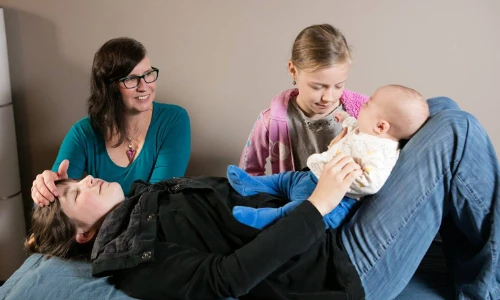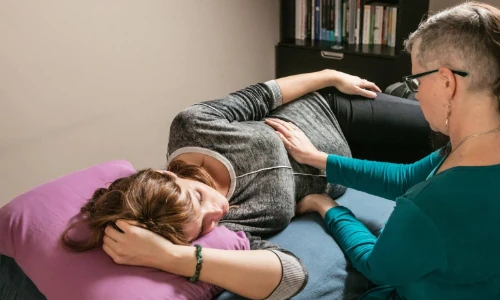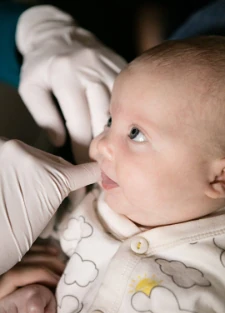Craniosacral Therapy: Gaining Recognition in Pre- and Post-Natal Care
Tuesday, November 01, 2016, 04:00 PM
If you've watched the latest James Bond movie Spectre, you may have noticed Dr. Madeline Swann prescribing CranioSacral Therapy at her exclusive treatment centre in the Austrian Alps.
As holistic therapies like CranioSacral Therapy (CST) become more and more mainstream, many people get the opportunity to try something they might not have otherwise heard about, whether from friends, TV athletic coverage, or even in major motion pictures!
Rhonda Lynn has been practising CST for six years. Her interest was sparked by her recovery after a motorcycle accident. She credits gentle and consistent therapies like CST and Pilates with getting her moving again.
Rhonda works out of the Lucina Birth and Family Wellness Centre in Edmonton's west end. Although she sees people at all life stages, she specializes in baby and family CranioSacral Therapy sessions.

A typical first adult session with Rhonda is different for each person since everyone comes to her with individual life experiences. Using gentle palpation, only five grams of pressure starting at the feet, Rhonda checks the CST rhythm of the body to see how it is moving. She uses that information as an assessment tool to treat the whole body.
A CranioSacral Therapy session can be described as peeling back layers. At a basic level (the first layer), CST works on structure and tissue. Rhonda says it could trigger emotional responses because emotions are held in our tissues:
"If someone has had a birth that was traumatic or if someone had to end up getting a caesarean, we work those tissues that have been traumatized and sometimes emotions can be triggered specific to that event."

CST is a learned skill but it is also intuitive. Although she hesitates to use the word "energy work" she admits there is an energetic component. "The deeper you get into the tissues, the more there is an emotional connection to the treatment."
Rhonda says patients have often described CranioSacral Therapy treatments as "relaxing" and say things like "I haven't stayed still for so long in my life". For some it feels heavy, as if they are sinking into the cushions, others feel light-headed, or feel sensations or buzzing through the legs.
 Because Rhonda uses only five grams of pressure, it makes CST ideal for working with babies. Babies can receive CST as early as a few hours after birth but often come in around three to six weeks old.
Because Rhonda uses only five grams of pressure, it makes CST ideal for working with babies. Babies can receive CST as early as a few hours after birth but often come in around three to six weeks old.
Rhonda will have the baby either lie on the mother's chest or on the table and treatments last around half an hour. Parents bring in their babies for many reasons but typical ones include latch issues, gas, reflux, or hematomas.
Even after the first treatment, Rhonda says parents usually see a difference in their baby's latch, or they sleep better and are generally happier and less tense.
Whether you try CranioSacral Therapy for yourself or try it on your child, regular sessions can help resolve lingering tissue and stress issues. Because of its relaxing effect, it brings the nervous system down leading to decreased anxiety and best of all — it is low-risk, making it an ideal treatment to try.

